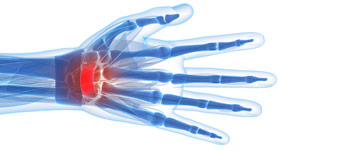Tendon Injuries of the Hand
Tendons are tough cords of tissue that connect the muscles to the bones in our body and make it possible for us to bend or extend certain body parts. There are two distinct types of tendons in the body. These are flexor tendons and extensor tendons.
Flexor tendons are those that enable us to flex or bend a body part, while extensor tendons are those that enable us to extend or straighten certain body parts.
In the case of the hand, each finger has multiple tendons running to it. The flexor tendons run across the palm side of the hand and are what allow us to bend our fingers in order to grip objects or form a fist with the hand. The extensor tendons run across the top of the hand are what allow us to straighten the fingers, point at things or let go of objects at will.
Compared to other parts of the body, the bones of the hand have very little flesh surround them. This leaves the delicate tendons of the hand – which are close to the surface of the skin – relatively unprotected and open to injury.
Types of Tendon Injuries of the hand
As you might imagine there are many different ways in which the tendons of the hand can become injured. They can become inflamed and irritated, jammed, pulled cut and torn. The following are some names of tendon related injuries or conditions, which you may have heard of:
- Trigger Finger
- Mallet Finger
- Boutonniere Finger Deformity
- Jersey Finger
Symptoms of Tendon Injury of the hand
We rely heavily upon the use of our hands each and every day. For this reason tendon injuries of the hand are usually hard to ignore. The primary symptom of an inflamed or injured tendon is limited use or complete inability to move certain parts of the hand. This is often accompanied by pain and swelling in the affected area.
Causes of Tendon Injury of the hand
Tendon damage is most often caused by physical injuries and is common in contact sports. There are also other pre-existing medical conditions, such as rheumatoid arthritis, that can be a factor in the development of tendon problems.
Treatment options for Tendon Injuries of the hand
There are several different options for the treatment of tendon damage in the hand, depending upon the severity and nature of the damage. If you are suffering from tendon injury it is recommended that you complete an examination with a qualified physician in order to determine which treatment is best suited to your situation. A consultation with one our leading hand specialists, here at the Hand & Wrist Center Los Angeles, will help determine which treatment is correct for your situation.
Non-surgical treatment options for Tendon Injury
Non-surgical treatment options for tendon injury include:
- Splinting
- Physical therapy
Injection of anti-inflammatory medication and other substances that can stimulate healing are also options for the treatment of minor tendonitis and other chronic tendon issues. For more arthritis and more severe cases of tendonitis, steroid injections may be used.
Surgical treatment options for Tendon Injury
When a flexor tendon is cut, surgery is the only option, and it is crucial that the tendon be operated on within seven days or less in order to avoid permanent debilitating damage.
The surgical method used for repair of tendon injuries in the hand varies based upon the extent and nature of the damage. A trained hand surgeon will know what to do for your situation. Generally speaking the process involves threading both ends of the severed tendon back through the protective tendon sheaths of the finger (tendons which have been cut typically retract after being torn) and suturing them back together. These sutures are not strong enough for normal hand use but will hold the tendon together while it heals. During this time the hand will be splinted to limit movement.
Most tendon repair surgeries can be performed an outpatient basis. This means that patients can return home on the same day and no overnight care is required.
Instructions for different types of Tendon Injuries
In the case of extensor tendon injuries treated with or without surgery, one will generally be required to wear a splint for the seven to ten days following surgery. Once your doctor has directed you to remove the splint, it is crucial to start immediately on a course of rigorous physical therapy, in order to avoid loss of function.
In the case of a flexor tendon injury it is crucial that one start on a program of physical therapy immediately after surgery, as the risk of losing function with this kind of tendon injury is very high.
Top Los Angeles Hand Surgeons
If you are suffering from injuries or issues with your hand or wrist, you have come to the right place. Our doctors and surgeons, here at the Hand & Wrist Center Los Angeles, are the leaders in hand surgery in Los Angeles. Contact our offices today or click here to schedule a consultation.


